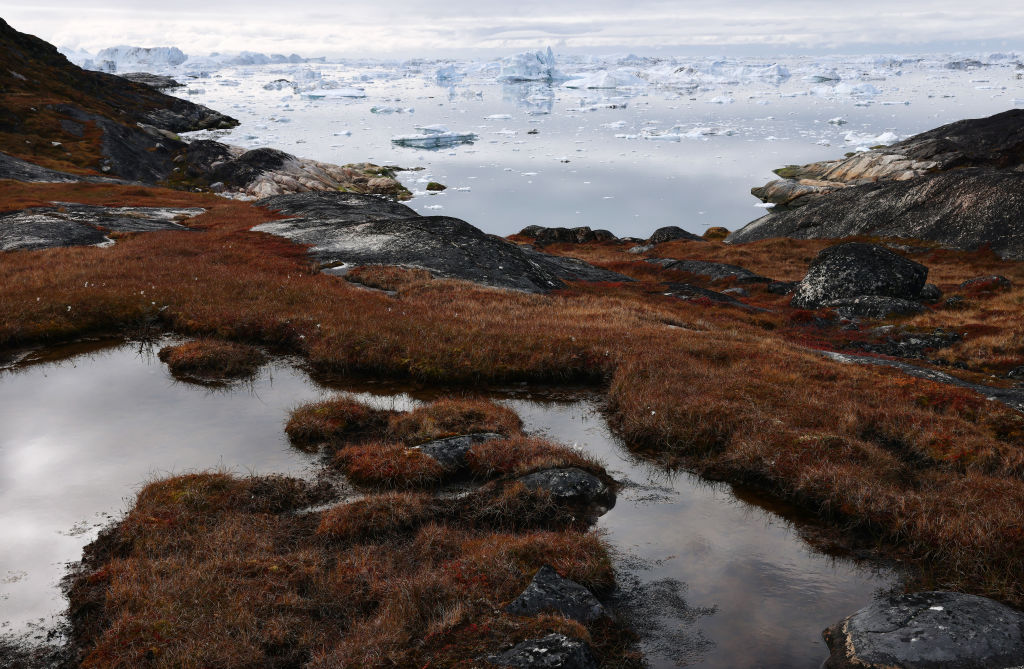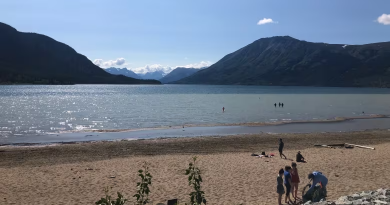Blog: Radical Arctic warming – rain, rain, here to stay?

Evidence of climate change in the Arctic has been growing for the past few years, including in the form of broken temperature records, permafrost loss, and wildfires.
Last month, another indicator of how the weather patterns in the far north have shifted appeared in the form of a report which has detailed a trend towards greater instances of rainfall in the Arctic, often replacing snowfall even in the most northerly latitudes.
As the open access piece in the journal Nature Communications explained, the hydrological cycle, (aka the ‘water cycle’, meaning the process by which water is transferred from land and sea to the atmosphere and back again in the form of evaporation and precipitation), is escalating in the Arctic, due to growing areas of open water and local warming processes which have prompted the shift from snow to rain in many northern latitudes.
The development of a ‘rain-dominated precipitation regime’ is thus expected to accelerate between now and the end of the century, contributing to an Arctic amplification effect, including sea level rises which would be experienced around the world. As detailed in a January 2021 study published in The Cryosphere, since the 1990s a staggering 28 trillion tonnes of ice, including 7.6 trillion tonnes in the Arctic Ocean and another 3.8 trillion from the Greenland Ice Sheet, has been lost due to shifting temperatures. Moreover, the future normalization of increased rainfall patterns in the Arctic could take place ten to twenty years earlier than previous predictions.
This research was undertaken by a team overseen by the Centre for Earth Observation Science in the Clayton H. Riddell Faculty of Environment, Earth, and Resources at the University of Manitoba, and led by postdoctoral fellow Michelle McCrystall.
This new data underscored the urgency of ensuring that global warming remains under the 1.5ºC threshold, which has been called for by numerous actors, including during the recently concluded United Nations Climate Change Conference (COP26) in Glasgow. That event ended with an admission that many governments were failing to do enough to curb carbon emissions since the watershed 2015 Paris climate summit. There was also much consternation over an eleventh hour adjustment to the COP26 pledges, spearheaded by the government of India, that coal usage would be ‘phased down’ rather than ‘phased out’. A delay in abandoning coal as a fuel source would complicate unified efforts to maintain the 1.5-degree ceiling.
Effects on plants, wildlife
In addition to further affecting weather patterns in the Arctic and beyond, a surfeit of rain in the far north will also have detrimental effects on local fauna, including foraging animals such as caribou, muskox, and reindeer, which would find food sources more difficult to reach due to ice layers caused by frozen rain. These challenges include the ‘rain-on-snow’ (RoS) effects, which result on ice layers on top of snow cover which makes access to the soil underneath by animals and people more challenging.
Frequent freezing rain events not only pose challenges for mobility and transportation, but also increase the risks of avalanches and ‘quick clay’ events in the Arctic. As well, emerging shifts in rain and ice patterns stand to affect livelihoods of Arctic peoples who rely on hunting and herding, including Sámi peoples in the Nordic Arctic and Nenet populations in Russia.
There is also the question of whether larger Arctic rainfall volumes would mitigate the jet stream, which would also effect climate well south of the Arctic Circle. One such pattern, the Gulf Stream, which extends into the far northern Atlantic, has already been identified as being at risk of slowing down or even fading due to climate change pressures. Among other benefits, the Gulf Stream is responsible for keeping winter temperatures in the coastal Nordic regions relatively mild considering their latitudes, (however, since late last month the Nordic Arctic has experienced especially frigid weather of late).
Rain on Greenland summit
Meanwhile, to the west in Greenland, the island has been experiencing an unusual amount of rainfall this year, and late this November it was confirmed that rain had fallen at Summit Station, the highest elevation of the Greenland Ice Sheet, at about 3.2 kilometres above sea level. Rainfall and temperatures above freezing had already been recorded at the station during August of this year. Specifically, a temperature of 0.48ºC had been observed on 14 August this year, only marking the fourth time that a figure of over zero had been recorded at that locale, (the first such above-freezing measurement was verified in 1995).
Last week, the Arctic Council’s Senior Arctic Officials (SAO) meeting took place in Salekhard (Салехард), northern Russia, the first such gathering since the country assumed the chair position earlier this year. Representatives from Moscow had confirmed their commitment to addressing climate change issues as a priority during its chair of the organisation. In May of this year, one of the Working Groups within the Council, the Arctic Monitoring and Assessment Programme (AMAP) released a report [pdf] on prominent trends in Arctic climate which included warnings about the region experiencing a greater frequency of extreme events, many of which were having a negative impact on northern communities and ecosystems. This latest information about how local weather in the Arctic is undergoing such fundamental transformation underscores the amount of work governments and organisations still have ahead of them.
Related stories from around the North:
Canada: Nunavut, Canada breaks 47 daily temperature records in 1st 6 days of October, CBC News
Finland: Temperatures headed toward -40C in Finnish Lapland, Yle News
Greenland: Arctic Report Card 2021 – Sea ice changes, rain on Greenland ice sheet among dramatic changes in North, Eye on the Arctic
Russia: WMO confirms 38 C Arctic temperature record in Russia, Eye on the Arctic
Sweden: January temperatures about 10°C above normal in parts of northern Sweden, says weather service, Radio Sweden



